
Localization and topography of the arteries on the middle forehead region for eluding complications following forehead augmentation: Conventional cadaveric dissection and ultrasonography investigation (2020)
Title : Localization and topography of the arteries on the middle forehead region for eluding complications following forehead augmentation: Conventional cadaveric dissection and ultrasonography investigation
Researcher : Phumyoo, T., Jiirasutat, N., Jitaree, B., Rungsawang, C., Pratoomthai, B., Tansatit, T.
Abstract :Forehead augmentation with filler injection is one of the most dangerous procedures associated with iatrogenic intravascular injection resulting in the severe complications. Nonetheless, few studies have determined the explicit arterial localization and topography related to the facial soft tissues and landmarks. Therefore, this study aimed to determine an arterial distribution and topography on the middle forehead region correlated with facial landmarks to grant an appropriate guideline for enhancing the safety of injection. Nineteen Thai embalmed cadavers were discovered with conventional dissection and 14 Thai healthy volunteers were investigated with ultrasonographic examination on the middle forehead. This study found that at the level of mid-frontal depression point, the transverse distance from the medial canthal vertical line to the superficial and deep branches of supraorbital artery were 9.1 mm and 15.1 mm, respectively. Whereas the depths from the skin of these arteries were 4.1 mm and 4.3 mm, respectively. Furthermore, the frontal branch of superficial temporal artery was detectable in 42.1% as an artery entering the forehead area. At the level of lateral canthal vertical line, the vertical distance of frontal branch was 31.6 mm, and the depth from skin of the artery was 2.7 mm. In conclusion, a proper injection technique could be performed based on an intensive arterial distribution and topography, and ultrasonographic examination before the injection is also suggested in order to restrict the opportunity of severe complications.
Keywords: Complication of filler injection , forehead augmentation , frontal branch of superficial temporal artery , superficial and deep branches of supraorbital artery , ultrasonographic investigation
Link to Academic article: https://journals.lww.com/jcraniofacialsurgery/Abstract/2020/10000/Localization_and_Topography_of_the_Arteries_on_the.43.aspx
Journal : Journal of Craniofacial Surgery, 2020, 31(7).
Bibliography : Phumyoo, T., Jiirasutat, N., Jitaree, B., Rungsawang, C., Pratoomthai, B., & Tansatit, T. (2020). Localization and topography of the arteries on the middle forehead region for eluding complications following forehead augmentation: Conventional cadaveric dissection and ultrasonography investigation. Journal of Craniofacial Surgery, 31(7), 2029–2035.
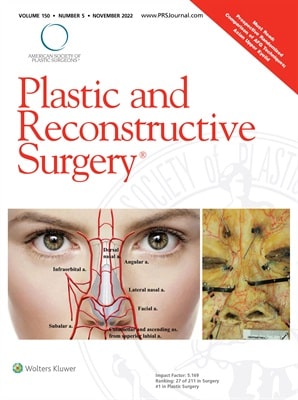
Lower Nose Arterial Plexus and Implications for Safe Filler Injections (2022)
Title : Lower Nose Arterial Plexus and Implications for Safe Filler Injections
Researcher : Tansatit, T., Jitaree, B., Uruwan, S., Rungsawang, C.
Abstract : Background: The lower nose has abundant blood supply; however, nasal tip necrosis still occurs following filler injections. This study revealed the complicated pattern of the arterial supply of the lower nose.
Methods: The arterial pattern of the lower nose was studied in 40 cadavers using conventional dissections and translucent modified Sihler staining.
Results: Two arterial rings were connected in a figure of eight. The upper ring (nasal arterial circle) consisted of the lateral nasal and the subalar arteries encircling the nasal tip and alae. The lower ring (arterial plexus of the upper lip) was more important because of the contribution of the facial and superior labial arteries. This specific feature had not been mentioned elsewhere.
Conclusion: Understanding this specific feature of the blood supply of the lower nose is essential for aesthetic physicians to perform the appropriate techniques during filler injection procedures in the nasal and perioral regions.
Link to Academic article: DOI: 10.1097/PRS.0000000000009649
Journal : Plastic and Reconstructive Surgery, 2022, 150(5),
Bibliography : Tansatit, T., Jitaree, B., Uruwan, S., & Rungsawang, C. (2022). Lower Nose Arterial Plexus and Implications for Safe Filler Injections. Plastic and Reconstructive Surgery,150(5), 987E–992E. DOI: 10.1097/PRS.0000000000009649
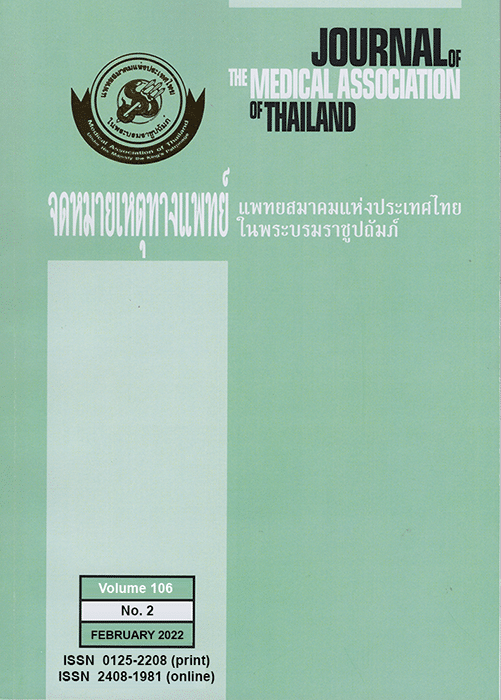
Maternal and neonatal outcomes of parturients with or without amniotomy for augmentation of labor (2017)
Title : Maternal and neonatal outcomes of parturients with or without amniotomy for augmentation of labor
Researcher : Thirawat, S., Kovavisarach, E.
Abstract : Objective: To determine the maternal and neonatal outcomes of the low-risk term pregnancies with or without amniotomy for augmentation of labor.
Material and Method: A retrospective cohort study of term pregnant women in cephalic presentation with labor pain who delivered in Rajavithi Hospital between January 1 and December 31, 2014 was conducted. Those parturients whose membranes were ruptured by amniotomy were study cases and those whose amniotomy were not performed and delivered immediate after the study cases were assigned as the control cases.
Results: Five hundred ninety eight women with uncomplicated pregnancy were enrolled and divided equally into two groups, one of 299 cases with amniotomy and another 299 cases without amniotomy. The present study showed that pregnant women in amniotomy group had a significantly higher rate of cesarean delivery (p<0.001) and birth asphyxia (p = 0.002). The duration of labor, maternal complications, and neonatal complications were not significantly different between the two groups.
Conclusion: Rate of cesarean delivery and birth asphyxia were significantly higher in the amniotomy group compared with the non-amniotomy group.
Keywords: Amniotomy, Duration of labor, Cesarean delivery, Neonatal outcome, Uncomplicated pregnancy
Link to Academic article: http://www.jmatonline.com/index.php/jmat/article/view/8451
Journal : Journal of the Medical Association of Thailand, 2017, 100(11)
Bibliography : Thirawat, S., & Kovavisarach, E. (2017). Maternal and neonatal outcomes of parturients with or without amniotomy for augmentation of labor. Journal of the Medical Association of Thailand, 100(11), 1156–1161.

Mechanical and Physical Properties of Concrete Modified with Natural Rubber Latex
Title : Mechanical and Physical Properties of Concrete Modified with Natural Rubber Latex
Researcher : Pheerawat Plangoen
Department : Department of Civil Engineering, Faculty of Engineering, Siam University, Bangkok, Thailand
Email : pheerawat.pla@siam.edu
Abstract : To improve the performance of concrete, natural rubber latex (NRL) is mixed with concrete. It has been observed that rubber latex-modified concrete is more durable than conventional concrete due to superior strength. This study analyzed the physical and mechanical properties of concrete mixed with natural rubber latex. In this research, impacts of natural rubber latex on workability, bleeding of concrete, compressive strength, tensile strength, flexural strength, bond stress and water absorption using concrete with a nominal concrete mix proportion of 1:2:4 (cement : sand : gravel) by volume. Rubber latex-modified concrete compositions containing 0%, 1%, 3%, 5%, 10%, and 15% by weight of cement were prepared or polymer concrete ratio (P/C), and the strength of the structure was tested after 28 days. The results indicated that the polymer cement ratio (P/C) of 1% gives the best performance with 245 ksc compressive strength, 35 ksc tensile strength, 46 ksc flexural strength, 34 ksc bond stress and average water absorption was 0.95%. Based on the results of this study, polymer cement ratio (P/C) of 1% by weight is most recommended to be used with various types of concrete structures.
Key words : natural rubber latex, concrete, mechanical, polymer cement ratio
Website : 2018 5th Global Conference on Polymer and Composite Materials (PCM 2018) http://www.cpcmconf.org/2018/
Download PDF : Mechanical and Physical Properties of Concrete Modified with Natural Rubber Latex
Bibliography : Pheerawat Plangoen. (2018). Mechanical and physical properties of concrete modified with natural rubber latex. In 2018 5th Global Conference on Polymer and Composite Materials (PCM 2018). Kitakyushu, Japan
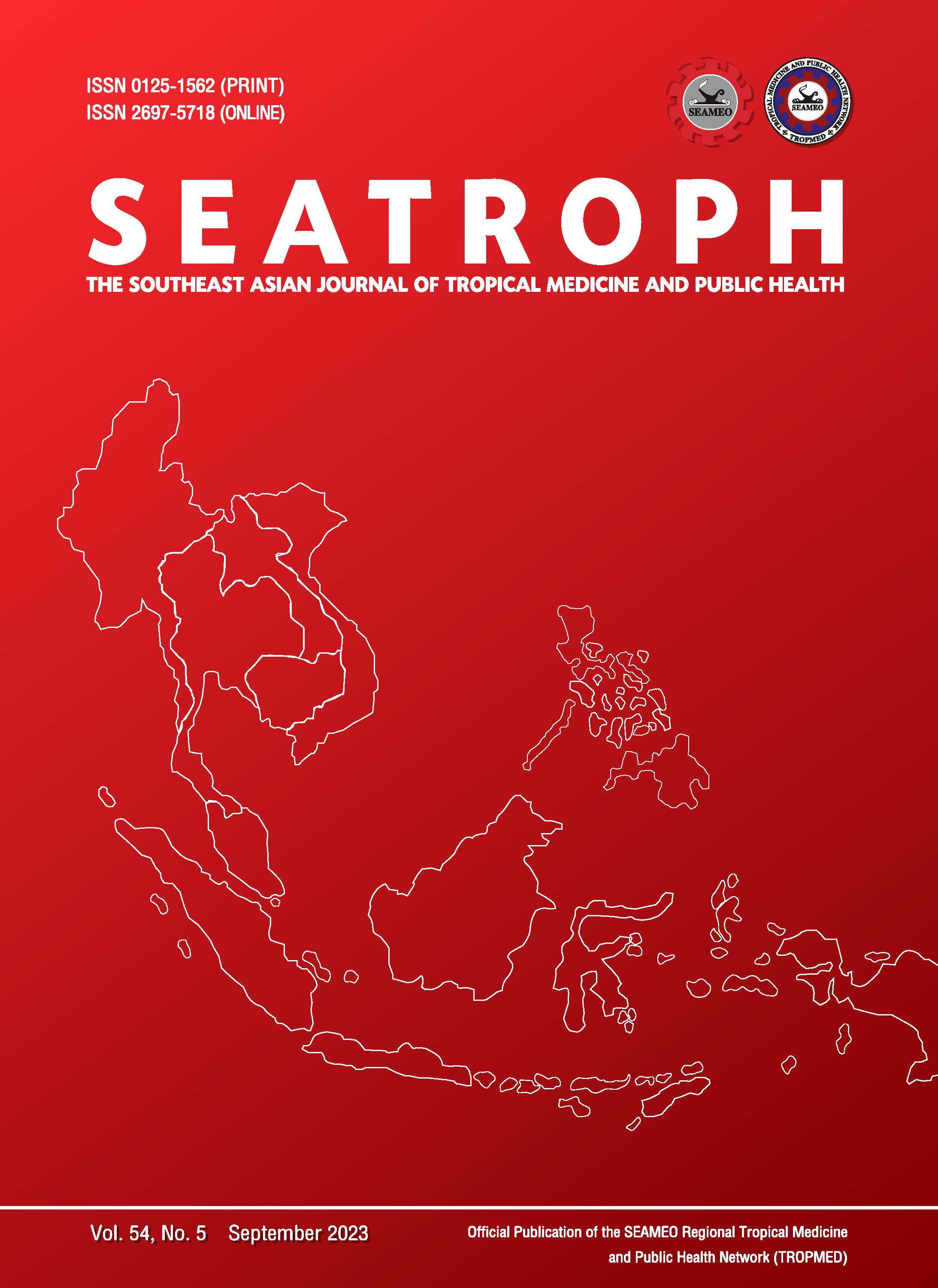
Microbial, Steroids and Heavy Metals Contamination and Antimicrobial Resistance of Bacterial Isolates in Thai Herbal Products (2023)
Title : Microbial, Steroids and Heavy Metals Contamination and Antimicrobial Resistance of Bacterial Isolates in Thai Herbal Products
Researcher : Piyawan Pipobwatthana , Chalermsri Pummangura, Sasitorn Jaroennon, Chanwit Tribuddharat, Huttaya Thuncharoon, Apichot So-Ngern, Vipavee Rodjun, Ruxjinda Wattanalai and Somporn Srifuengfung
Link to article: The Southeast Asian Journal of Tropical Medicine and Public Health, Volume 54, Issue 5, pages 244-262. https://journal.seameotropmednetwork.org/index.php/jtropmed/article/view/865
Journal : The Southeast Asian Journal of Tropical Medicine and Public Health / in Scopus
Citation : Chongtrakool P, Charoensareerat T, Tribuddharat C, Samretwit D, Chaikulsareewath A, Noiduang P, Thuncharoon H, Yungyuen T. and Srifuengfung S. (2023). Microbial, steroids and heavy metals contamination and antimicrobial resistance of bacterial isolates in Thai herbal products. The Southeast Asian Journal of Tropical Medicine and Public Health, 54(5), 118-124.
ฐานข้อมูลงานวิจัย มหาวิทยาลัยสยาม : https://e-research.siam.edu/kb/microbial-steroids-and-heavy-metals/
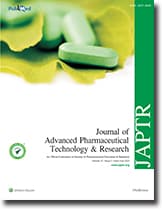
Modulation of platelet functions by Careya sphaerica Roxb. leave extracts (2021)
Title : Modulation of platelet functions by Careya sphaerica Roxb. leave extracts
Researcher : Warachate Khobjai1, Wanvisa Ninlaor2, Worawan Watcharasamphankul3, Thaksaorn Thongom2, Suriyan Sukati4
Department : 1 Department of Preclinic, Faculty of Medicine, Siam University, Phasi Charoen, Bangkok, Thailand
2 Department of Thai Traditional Medicine, Thai Traditional Medicine College, Rajamangala University of Technology Thanyaburi, Pathum Thani, Thailand
3 Department of Clinical Microbiology, Faculty of Medical Technology, Nation University, Lampang, Thailand
4 Department of Medical Technology, School of Allied Health Sciences, Walailak University, Nakhon Si Thammarat, Thailand
Abstract : Platelets form a plug to prevent blood loss and contribute to wound healing. Kradonbok, Careya sphaerica Roxb., is a Thai plant with medicinal properties. Conventionally, leaves of C. sphaerica are being used to help wound healing in Thailand. The present study was aimed to investigate the effect of C. sphaerica on the function of platelet. Four different extracts of leaves of C. sphaerica (distilled water, methanol, ethanol, and chloroform extracts) were prepared. The extracts at 5.0 mg/ml per dose were tested for the effect of C. sphaerica on platelet adhesion and aggregation properties, by employing a microtiter plate approach. The phytochemical identification was done by using gas chromatography–mass spectrometry (GC-MS). Our data revealed that chloroform extract significantly activated thrombin-induced platelet adhesion (105.27 ± 0.11%, P < 0.05). None of the extracts exhibited an improvement in platelet aggregation. Further GC-MS analysis of the chloroform extract revealed five key phytochemical constituents with potential platelet activation properties. In conclusion, our study evaluated platelet activation and potentially wound healing property of C. sphaerica. GC-MS analysis identified potential bioactive phytochemical compounds in C. sphaerica which warrant further investigation to characterize these compounds.
Keywords: Careya sphaerica roxb, platelet adhesion, platelet aggregation, primary hemostasis, wound healing
Link to Academic article: DOI:10.4103/japtr.japtr_95_21
Journal : Journal of Advanced Pharmaceutical Technology and Research, 2021, 12(4).
Bibliography : Khobjai, W., Ninlaor, W., Watcharasamphankul, W., Thongom, T., & Sukati, S. (2021). Modulation of platelet functions by Careya sphaerica Roxb. leave extracts. J Adv Pharm Technol Res, 12(4), 420-424. Retrieved from: https://www.japtr.org/text.asp?2021/12/4/420/328638
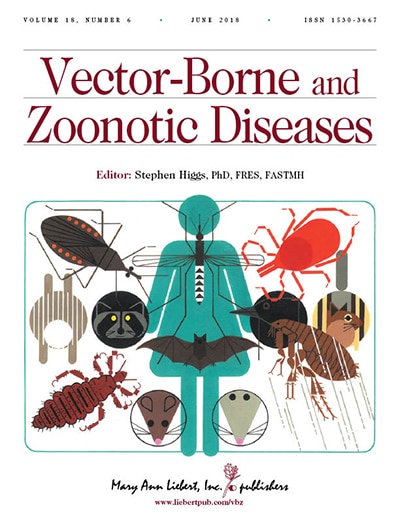
Molecular Evidence of Rickettsia in Human and Dog Blood in Bangkok (2018)
Title : Molecular Evidence of Rickettsia in Human and Dog Blood in Bangkok
Researcher : Mongkol, N., Suputtamongkol, Y., Taweethavonsawat, P., Foongladda, S.
Abstract : Rickettsia spp. has been detected in dog fleas in Bangkok, Thailand. With the intent of collecting evidence to confirm the presence of rickettsioses in dogs and to assess the level of associated potential for accidental human infection, human buffy coat from patients with fever of unknown origin (n = 168), whole blood samples from dogs (n = 353), and 19 flea groups from our dog sample population were studied during the 2012 to 2014 study period. The presence of Rickettsia was investigated by molecular detection of 23S rRNA gene of Rickettsia genus, citrate synthase (gltA) gene, and 17-kDa outer membrane gene. All positive samples were confirmed by DNA sequence analysis. Using phylogenetic analysis, three groups of Rickettsia were detected, as follows: Rickettsia felis in 8 patients and 8 dogs; R. felis-like sp. in 2 patients, 5 dogs, and 11 flea samples; and Rickettsia typhi in 3 patients. In addition to confirming the presence of R. felis in Thai patients, the findings of this study suggest that R. felis-like sp. isolated from fleas that were symbiotically coexisting with dogs that we evaluated in this study can transmit and cause disease in dogs and humans in Bangkok.
Link to Academic article: https://doi.org/10.1089/vbz.2017.2180
Journal : Vector-Borne and Zoonotic Diseases, 2018, 18(6).
Bibliography : Mongkol, N., Suputtamongkol, Y., Taweethavonsawat, P., & Foongladda, S. (2018). Molecular Evidence of Rickettsia in Human and Dog Blood in Bangkok. Vector-Borne and Zoonotic Diseases, 18(6), 297–302.
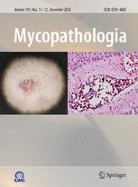
Multi-probe Real-Time PCR Identification of Four Common Candida Species in Blood Culture Broth (2014)
Title : Multi-probe Real-Time PCR Identification of Four Common Candida Species in Blood Culture Broth
Researcher : Foongladda, S., Mongkol, N., Petlum, P., Chayakulkeeree, M.
Abstract : We developed a single-tube real-time polymerase chain reaction (PCR) assay with multiple hybridization probes for detecting Candida albicans, C. tropicalis, C. glabrata, and C. parapsilosis. Primers were designed to amplify 18S rRNA gene of the genus Candida, and DNA probes were designed to hybridize two areas of the amplicons. The amplification curves and specific melting peaks of the probes hybridized with PCR product were used for definite species identifications. The reaction specificity was 100 % when evaluating the assay using DNA samples from 21 isolates of fungal and bacterial species. The assay was further evaluated in 129 fungal blood culture broth samples which were culture positive for fungus. Of the 129 samples, 119 were positively identified as: C. albicans (39), C. tropicalis (30), C. parapsilosis (23), C. glabrata (20), Candida spp. (5), and two samples containing mixed C. glabrata/C. albicans and C. glabrata/C. tropicalis. The five Candida spp. were identified by sequencing analysis as C. krusei, C. dubliniensis, C. aquaetextoris, and two isolates of C. athensensis. Of the ten samples which showed negative PCR results, six were Cryptococcus neoformans, and the others were Trichosporon sp., Rhodotorula sp., Fusarium sp., and Penicillium marneffei. Our findings show that the assay was highly effective in identifying the four medically important Candida species. The results can be available within 3 h after positivity of a blood culture broth sample.
Link to Academic article: DOI: 10.1007/s11046-014-9743-7
Journal : Mycopathologia, 2014, 177(5-6).
Bibliography : Foongladda, S., Mongkol, N., Petlum, P., & Chayakulkeeree, M. (2014). Multi-probe Real-Time PCR Identification of Four Common Candida Species in Blood Culture Broth. Mycopathologia, 177(5-6), 251–261. DOI: 10.1007/s11046-014-9743-7
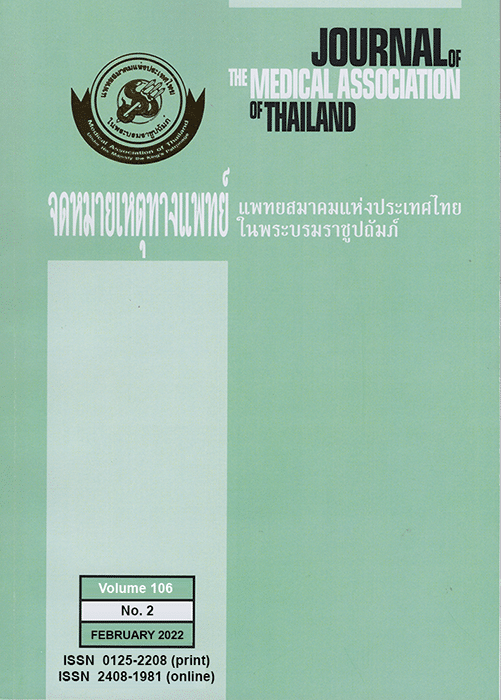
Need for internal medicine subspecialists in Thailand (2017)
Title : Need for internal medicine subspecialists in Thailand
Researcher : Leelarasamee, A., Intragumtornchai, T., Pannarunothai, S., …Krittayaphong, R., Bowonwatanuwong, C.
Abstract : Background: Matching supply side of the Internal Medicine (IM) subspecialists to the demand for complex medical care at referral medical centers would lead to more efficient health system management and ultimately optimal clinical outcome. The second decade of the universal health coverage policy in Thailand has raised the awareness on how to reach equitable utilization goals of good quality medical services, while barriers of accession have been removed. More accurate evidence-based human resource planning is timely needed.
Objective: To estimate the number of the ten subspecialists in internal medicine (neurologist, cardiologist, endocrinologist, gastroenterologist and hepatologist, nephrologist, hematologist, oncologist, rheumatologist, pulmonologist, and infectious disease specialist) needed for complex medical care based on the workload in the year 2013.
Material and Method: The present study applied a needs assessment model with evidence-based approach. Claimed data of inpatients in the year 2013 from the three government insurance schemes (the Civil Servant Medical Benefit, the Social Security and the Universal Health Coverage schemes), and out-patient data from Universal Coverage System were used to estimate demand for subspecialists. The Human Resource Working Group of the Royal College of Physicians of Thailand agreed on the conceptual framework to estimate the need for ten subspecialists based on clinical activities of outpatient consultations, inpatient ward rounds and non-operating room procedures on medical cases of respective diagnosis related group with severe and catastrophic comorbidities and complications by the Thai-DRG version 5. Representatives from the Associations of IM subspecialties approved the lists of ICD-10 diagnosis and ICD-9-CM procedure codes specific to each subspecialist care and proposed assumptions on rates of consultations from other specialists. Surveys were done to subspecialists in 6 major provincial clusters and representatives from IM subspecialty Associations asking time spent on main activities of patient care. The number of full-time-equivalent (FTE) subspecialists needed was calculated by multiplying the clinical workloads measured in minutes spent for each activity (ward round, ward work, inpatient and outpatient consultations) to get the total time needed, then divided by the available time for clinical activity of one subspecialist.
Results: From 5.9 million inpatient discharges in the year 2013, primary responsibility of patients in respective severe and catastrophic DRGs related to specific subspecialist workloads were summed up for teaching hospitals and regional hospitals ranging from as lowest the 2,849 cases for rheumatology to the highest 24,610 cases for gastroenterology and hepatology. The number of inpatient non-operating room procedures by ICD-9-CM as listed by IM subspecialty Associations ranged from 8 times for endocrinologists to 22,927 times for cardiologists for the whole year. Of ten subspecialists, the estimated numbers of cardiologist, nephrologist, neurologist, gastroenterologist and hepatologist, endocrinologist, oncologist, rheumatologist, hematologist, pulmonologist and infectious disease subspecialist needed at teaching and regional hospitals were 516, 241; 345, 144; 312, 143; 195, 124; 189, 45; 137, 170; 90, 47; 96, 111; 203, 87 and; 129, 44 respectively according to the workload recorded in the year 2013. The forecast FTE found the overall gap of discrepancy at 7 percent. If the distributions of these subspecialists in public and private hospitals were taken into account, the gap of discrepancy in public hospitals increased to 47 percent.
Conclusion: The demand-based forecast for the number of subspecialist needed was made possible with assumptions on conceptual framework for case selection, the rates of consultation and time-spent related to activities of patient care. The estimated numbers of subspecialists were anticipated far from optimum since the workload in the year 2013 was derived as a consequence of pre-existing suboptimal infrastructure of healthcare system. In addition, the deficit of subspecialists may increase in the near future when highly efficient, non- or mildly invasive, time-consuming procedures of acute illness increase. Sustainable matching demand and supply of human resource for health needed further validations of these assumptions.
Keywords: Internal Medicine subspecialists, Internal Medicine subspecialty, DRG database, demand-based forecast, human resource for healthcare system
Link to Academic article: http://www.jmatonline.com/index.php/jmat/article/view/7860
Journal : Journal of the Medical Association of Thailand, 2017, 100(2)
Bibliography : Leelarasamee, A., Intragumtornchai, T., Pannarunothai, S., Laohavinij, S., Patjanasoontorn, B., Suntorntham, S.,…Bowonwatanuwong, C. (2017). Need for internal medicine subspecialists in Thailand. Journal of the Medical Association of Thailand, 100(2), 239-253.
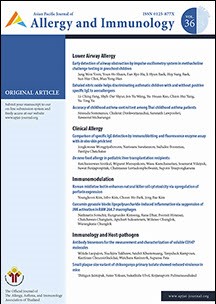
Needle length for epinephrine prefilled syringes in children and adolescents: Is one inch needle appropriate? (2018)
Title : Needle length for epinephrine prefilled syringes in children and adolescents: Is one inch needle appropriate?
Researcher : Clin.Prof.Suwat Benjaponpitak
Department : Faculty of Medicine, Siam University, Bangkok, Thailand
E-mail : med@siam.edu
Abstract : Background: Intramuscular epinephrine is the first line drug in the treatment of anaphylaxis. This study was to identify the appropriateness of 1 inch needle length for epinephrine prefilled syringes in children.
Methods: Children aged 1 month to 18 years were enrolled. Skin to muscle depth (STMD) and skin to bone depth (STBD) were measured using an ultrasonography at the mid-anterolateral thigh. A 1 inch needle was considered as being appropriate if the STBD was more than 1 inch and the STMD was less than 1 inch.
Results: Seventy five infants, 75 pre-school aged children, 75 school aged children and 147 adolescent were enrolled: 196 (52.7%) children were male. A 1 inch needle length was appropriate for 61% of the infants, for 88% of the preschool children, for 99% of the school aged children and for 95% of the adolescents. Thigh circumference ≥23 cm, BMI ≥16 kg/m2 and BW ≥ 6 kg in infants provided the sensitivity of 74%-96% in predicting the appropriateness of 1 inch needle. In preschool group, thigh circumference ≥25 cm, BMI ≥13.5 kg/m2 and BW ≥ 10 kg provided the sensitivity of 98.5-100% in predicting the appropriateness of 1 inch needle. Thigh circumference ≥ 49 cm in adolescents provided the sensitivity of 75% in predicting that a 1 inch needle was too short.
Conclusion: One inch needle length may not be appropriated for intramuscular injection at thigh in all children. Thigh circumference, BMI and body weight are useful for predictor for using the 1 inch needle.
Key words: Anaphylaxis, children, epinephrine, needle length, intramuscular
Link to Academic article: DOI: 10.12932/AP-020317-0039
Journal : Asian Pacific journal of allergy and immunology
Bibliography : Manuyakorn, W., Bamrungchaowkasem, B., Ruangwattanapaisarn, N., Kamchaisatian, W., & Benjaponpitak, S. (2018, June). Needle length for epinephrine prefilled syringes in children and adolescents: Is one inch needle appropriate?. Asian Pac J Allergy Immunol, 36(2), 113-119. doi: 10.12932/AP-020317-0039. PMID: 28938839.